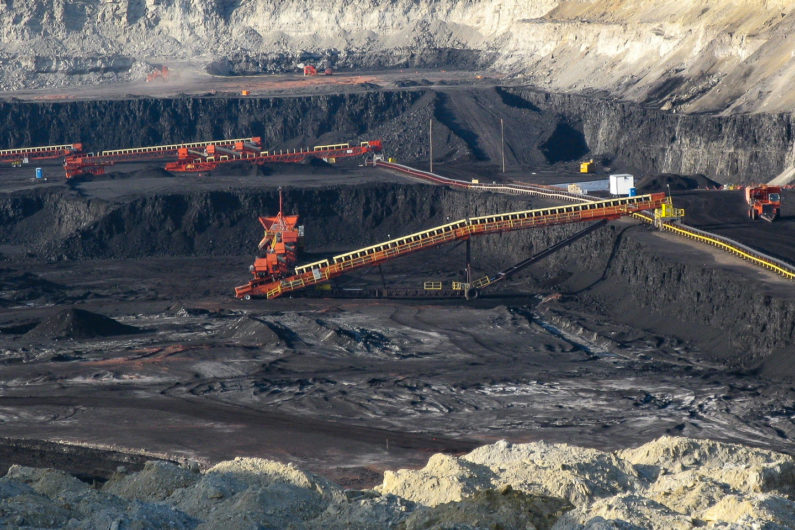Uncompetitive auctions, manipulated royalty payments and ignored social costs mar U.S. government’s coal leasing program, Stanford analysis shows
The U.S. government sells coal mined on federal lands at bargain rates, losing valuable revenue and hurting efforts to reduce greenhouse gases. Stanford scientists recommend significant changes.
Coal mined on leased federal lands accounts for 40 percent of all coal mined in the United States and 13 percent of U.S. energy-related greenhouse gas emissions. However, the U.S. Department of the Interior is reviewing its program, due to concerns that the revenues from permit auctions and royalties are too low.
A Stanford economist and former doctoral student are among a group of nine experts who reviewed the program and made recommendations for how it could be improved to bring in more revenue and take into account the social costs of burning coal. The group published its recommendations in Science. Former PhD graduate student Kenneth Gillingham was senior author on the paper.
“Although politics is changing in Washington, the arguments and observations in this article reach across party lines,” said Charles Kolstad, an author on the paper and a senior fellow at the Precourt Institute for Energy and at the Stanford Institute for Economic Policy Research. “Valuable government revenue is being lost and low-cost actions to reduce greenhouse gases are being forsaken.”
The group’s recommendations include:
Charge mining companies for the social costs of CO2 emissions
Most coal from federal lands comes from the Powder River Basin in Wyoming and Montana, which can be mined at very low cost. The scientists argue that this coal is significantly underpriced relative to its social costs – including CO2 emissions, water pollution and land degradation. Just taking into account CO2 emissions, the social costs of burning coal are as much as six times the market price.
The scientists argue that charging mining companies for those social costs could raise the cost of coal and make less polluting forms of energy like oil or natural gas more appealing. Estimates suggest that these financial pressures on coal could reduce emissions by roughly three-quarters of that expected from regulations currently under litigation, called the Clean Power Plan, which President-elect Donald Trump has said he will abandon.
“CO2 aside, the social costs not covered by the royalty payments include emissions of coal-bed methane, water pollution and land degradation from mining activities,” said Kolstad. “And the cheap coal from federal lands depresses prices for coal from private lands.”
Make the auctions competitive
The federal government auctions the leases in a way that has led to a single bidder in more than 90 percent of leases from 1990 to 2012, Kolstad said. Almost all new leases are for extensions from existing surface mines. Companies other than the one with the infrastructure already in place usually cannot compete economically. Not surprisingly, Kolstad said, the lease revenue from the auctions has been lower than if leasing were a more open process.
Base royalty payments on actual revenue
The team found that the way the government sets royalties on coal leaves room for mining companies to artificially reduce their payments. That’s because the companies can choose whether to pay based on the sale price at the mine or on the delivered price to the power plant. They may sell the coal to a subsidiary at an artificially low price, reducing their royalty payment, and then the subsidiaries sell the coal at a higher price and the company pockets the difference.
The companies can also artificially reduce royalties when paying on delivery by taking self-reported – and sometimes substantially inflated – deductions for transportation. Alternatively, the mining companies can sell the coal to a utility under contracts knows as “take-or-pay.” Under such contracts, per-ton prices are set low in exchange for high payments if the utility ends up buying less coal than the agreed upon amount over a given period of time. The penalty payments are not subject to royalty payments to the government.
“Reforming these shortcomings could increase government revenues, which could be used to reduce taxes or the federal debt, or invested in infrastructure,” said Kolstad.
Looking ahead
Some people have reasoned that charging more for mining coal on federal lands might lead to more coal mining at other locations. Although the result could be lower government revenues, with little change in nationwide coal production, prices or greenhouse gas emissions, coal-mining employment might increase in parts of the East and Midwest.
The team also argues that it’s still not clear to what extent higher royalty payments would push energy producers to substitute non-federal coal or other fuels. And, other research could resolve several issues like how to make the lease auctions competitive and how reforming the federal program would affect the U.S. power industry and interact with state rules.
Gillingham is now an assistant professor of economics at Yale University. Researchers from UC-Davis, UC-Berkeley, University of Chicago, Resources for the Future, Brookings Institution, Massachusetts Institute of Technology and Harvard University were also co-authors.

